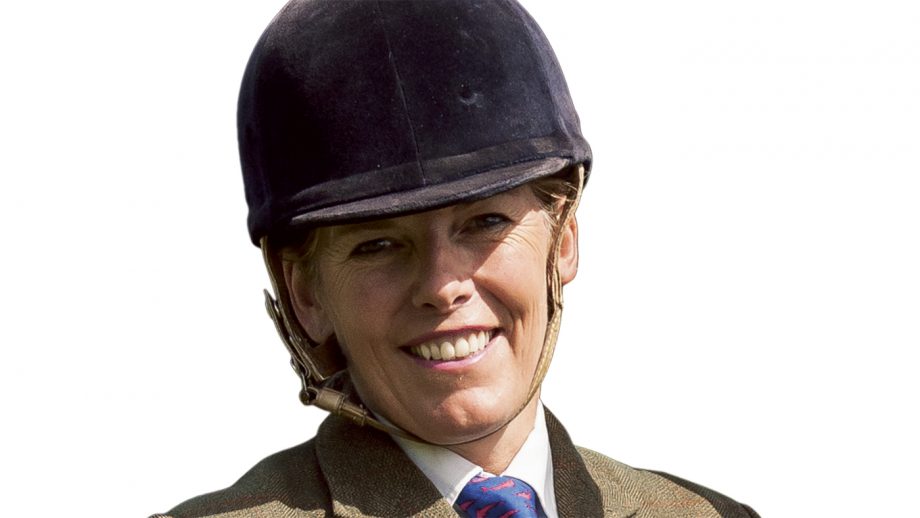Showing will not be the same for some time, writes H&H’s showing columnist
I’ve decided that 2020 is the year of confusion and consolidation. The confusion comes because none of us know what is going to happen, in both the big wide world and in our small but – to us – still important world of showing. As riders and producers, we can consolidate our horses’ education and our riding skills so that when we are back competing in confidence, we can feel that we have made the most of our time away from the show ring.
Government rules and guidelines change so frequently, and at times bewilderingly. We all want to behave responsibly, and we also have to consider our individual circumstances. The Showing Council has produced a blueprint for the resumption of safe showing which has been well received and is a positive move.
{"content":"PHA+SXTigJlzIGdvb2QgdG8gc2VlIHRoZXJlIGlzIHN0aWxsIGFuIGVhZ2VybmVzcyB0byBsZWFybi4gSeKAmW0gdGVhY2hpbmcgc2hvd2luZyBjbGluaWNzLCB3aGljaCBjYW4gYmUgcnVuIGluIGEgc2FmZSB3YXksIGFuZCBpdOKAmXMgaGVhcnRlbmluZyB0byBzZWUgcmlkZXJz4oCZIGVudGh1c2lhc20gYW5kIHRoZWlyIHdpbGxpbmduZXNzIHRvIGRvIHRoZSByaWdodCB0aGluZy4gSeKAmXZlIGp1c3QgYmVlbiBwYXJ0IG9mIGEgbG92ZWx5IGNsaW5pYyB3aXRoIGZvdXIgcGVvcGxlIGluIGVhY2ggZ3JvdXAgYW5kIHBhcnRpY2lwYW50cyB3ZXJlIGNhcmVmdWwgdG8ga2VlcCB0aGVpciBkaXN0YW5jZSBmcm9tIG1lIGFuZCBmcm9tIGVhY2ggb3RoZXIuPC9wPgo8cD5EcmVzc2FnZSwgc2hvd2p1bXBpbmcgYW5kIGV2ZW50aW5nIGFyZSBmb3JnaW5nIGFoZWFkIHdpdGhpbiBkaXN0YW5jaW5nIHJlZ3VsYXRpb25zLiBXaGVuIHlvdeKAmXJlIHRoZSBvbmx5IHJpZGVyIGluIHRoZSByaW5nLCB3aGF0IHBhc3NlcyBmb3Igbm9ybWFsIGxpZmUgYXQgdGhlIG1vbWVudCBpcyBmYXIgZWFzaWVyLiBTaG93aW5nIGVudGh1c2lhc3RzIGhhdmUgdG8gYmUgcGF0aWVudCBhbmQgYWx0aG91Z2ggd2UgYWxsIGhvcGUgd2Ugd2lsbCBldmVudHVhbGx5IHJldHVybiB0byBvdXIgdHJhZGl0aW9uYWwgZm9ybWF0cywgdGhvc2Ugd2hvIGNob29zZSB0byBnbyBvdXQgbXVzdCBhY2NlcHQgbmV3IHJlc3RyaWN0aW9ucyBhbmQgY2xhc3MgZm9ybWF0cy48L3A+CjxoMz5CcmVlZGluZyBjb21wbGFjZW5jeTwvaDM+CjxwPk9uZSBvZiB0aGUgYmlnZ2VzdCBjaGFuZ2VzIGluIGhvcnNlIGNsYXNzZXMgaXMgdGhhdCByaWRlIGp1ZGdpbmcgaGFzIGJlZW4gc2lkZWxpbmVkLiBJIHNhdyBhIHZpZGVvIG9mIGEgc2hvdyBpbiBTb3V0aGVybiBJcmVsYW5kIHdoZXJlIGEgcmlkZSBqdWRnZSB3YXMgcHJlcGFyaW5nIHRvIGdvIGFoZWFkIGFuZCBhbGwganVkZ2VzIG9uIHRoZSBncm91bmQgYW5kIG9mZmljaWFscyB3b3JlIG1hc2tzLiBJIGRvbuKAmXQgdGhpbmsgeW914oCZZCBmaW5kIG1hbnkgaW4gdGhlIFVLIHdpbGxpbmcgdG8gcmlkZSBqdWRnZSwgZXZlbiBpZiBpdCB3ZXJlIHBlcm1pdHRlZC48L3A+CjxwPjxkaXYgY2xhc3M9ImFkLWNvbnRhaW5lciBhZC1jb250YWluZXItLW1vYmlsZSI+PGRpdiBpZD0icG9zdC1pbmxpbmUtMiIgY2xhc3M9ImlwYy1hZHZlcnQiPjwvZGl2PjwvZGl2PjxzZWN0aW9uIGlkPSJlbWJlZF9jb2RlLTMxIiBjbGFzcz0iaGlkZGVuLW1kIGhpZGRlbi1sZyBzLWNvbnRhaW5lciBzdGlja3ktYW5jaG9yIGhpZGUtd2lkZ2V0LXRpdGxlIHdpZGdldF9lbWJlZF9jb2RlIHByZW1pdW1faW5saW5lXzIiPjxzZWN0aW9uIGNsYXNzPSJzLWNvbnRhaW5lciBsaXN0aW5nLS1zaW5nbGUgbGlzdGluZy0tc2luZ2xlLXNoYXJldGhyb3VnaCBpbWFnZS1hc3BlY3QtbGFuZHNjYXBlIGRlZmF1bHQgc2hhcmV0aHJvdWdoLWFkIHNoYXJldGhyb3VnaC1hZC1oaWRkZW4iPg0KICA8ZGl2IGNsYXNzPSJzLWNvbnRhaW5lcl9faW5uZXIiPg0KICAgIDx1bD4NCiAgICAgIDxsaSBpZD0ibmF0aXZlLWNvbnRlbnQtbW9iaWxlIiBjbGFzcz0ibGlzdGluZy1pdGVtIj4NCiAgICAgIDwvbGk+DQogICAgPC91bD4NCiAgPC9kaXY+DQo8L3NlY3Rpb24+PC9zZWN0aW9uPjwvcD4KPHA+SSBsb3ZlIGJlaW5nIGEgcmlkZSBqdWRnZSBhbmQgaG9wZSB0aGUgcm9sZSB3aWxsIHJldHVybiwgYXMgaXQgZ2l2ZXMgYSB1bmlxdWUgcGVyc3BlY3RpdmUsIGJ1dCBJIHdvdWxkbuKAmXQgZ2V0IG9uIHNvbWVvbmUgZWxzZeKAmXMgaG9yc2UgZXZlbiBhdCBhIGNsaW5pYy4gSSBkb27igJl0IHdhbnQgdG8gY29tZSBpbnRvIGNvbnRhY3Qgd2l0aCBvdGhlciBwZW9wbGXigJlzIHRhY2sgYW5kIGVxdWlwbWVudCBhbmQgd2UgbXVzdCBiZSBjYXJlZnVsIHRoYXQgdGhlIHJlbGF4YXRpb24gb2YgcnVsZXMgZG9lc27igJl0IGJyZWVkIGNvbXBsYWNlbmN5LjwvcD4KPGgzPlRoaW5raW5nIG91dHNpZGUgdGhlIHNob3cgcmluZzwvaDM+CjxwPlRoZXJlIGlzIGEgZmluZSBsaW5lIGJldHdlZW4gZW5jb3VyYWdpbmcgcmlkZXJzIHRvIHRyeSBkaWZmZXJlbnQgdGhpbmdzIGFuZCBtYWludGFpbmluZyB0aGVpciBhbGxlZ2lhbmNlIHRvIHNob3dpbmcuIEnigJl2ZSBhbHdheXMgYmVsaWV2ZWQgdGhhdCBzaG93IGhvcnNlcyDigJMgYW5kIHJpZGVycyDigJMgc2hvdWxkIGJlIHZlcnNhdGlsZS4gVGhhdCBjb3VsZCBiZSBhcyBzaW1wbGUgYXMgdGFraW5nIGEgeW91bmcgaG9yc2Ugb3V0IHRvIGEgZmV3IGRyZXNzYWdlIHNob3dzIHRvIGdldCBoaW0gdXNlZCB0byBiZWluZyBvdXQgYW5kIGFib3V0IGFuZCB3b3JraW5nIGluIGEgZGlmZmVyZW50IGVudmlyb25tZW50LCBvciBlbmpveWluZyBzb21lIHNjaG9vbGluZyBzaG93anVtcGluZyByb3VuZHMgaWYgeW914oCZcmUgYWltaW5nIGF0IHdvcmtlcnMgY2xhc3Nlcy48L3A+CjxkaXYgY2xhc3M9ImFkLWNvbnRhaW5lciBhZC1jb250YWluZXItLW1vYmlsZSI+PGRpdiBpZD0icG9zdC1pbmxpbmUtMyIgY2xhc3M9ImlwYy1hZHZlcnQiPjwvZGl2PjwvZGl2Pgo8cD5Tb21lIHNob3cgaG9yc2VzIGFuZCBwb25pZXMgZW5qb3kgdGhlaXIgam9iIHNvIG11Y2ggdGhleSBjYW4gY29udGludWUgaW50byB2ZXRlcmFuIGNsYXNzZXMuIE90aGVycyBuZWVkIHRvIGNoYW5nZSBkaXJlY3Rpb24gaWYgdGhleSBhY3F1aXJlIGEgYmxlbWlzaCB3aGljaCBzcG9pbHMgdGhlaXIgY2hhbmNlcywgb3IgaWYgdGhleSBhcmUgbm90IHN1aXRhYmxlIGZvciBhIHNjaG9vbG1hc3RlciByb2xlLiBJZiBldmVyeSBob3JzZSBoYXMgYSBnb29kIGdlbmVyYWwgZWR1Y2F0aW9uLCBpdCB3aWxsIGFsd2F5cyBmaW5kIGEgbmV3IGpvYiBhbmQgYSBnb29kIGhvbWUuIEFzIG93bmVycywgaXQgaXMgb3VyIHJlc3BvbnNpYmlsaXR5IHRvIGdpdmUgdGhlbSBldmVyeSBjaGFuY2UuPC9wPgo8ZGl2IGNsYXNzPSJpbmplY3Rpb24iPjwvZGl2Pgo8cD5BcyBJIHdyaXRlLCBJIGhhdmUganVzdCBvbmUgc2hvdyBpbiBteSBjYWxlbmRhciB0aGlzIHllYXIuIEnigJltIGFpbWluZyB0byB0YWtlIGp1c3Qgbm92aWNlcyB3aG8gaGF2ZSBlc3RhYmxpc2hlZCBhIGdvb2QgZm91bmRhdGlvbiBpbiB0aGVpciBzY2hvb2xpbmcgYW5kIGFyZSBhdCB0aGUgc3RhZ2Ugd2hlcmUgdGhleSBuZWVkIHRvIGdldCBvdXQgcmF0aGVyIHRoYW4gdGhlaXIgY29ubmVjdGlvbnMgd2FudGluZyB0byBnbyB0byBhIHNob3cuIEl04oCZcyBhbGwgYWJvdXQgc21hbGwgc3RlcHMsIGFuZCB3aWxsIGJlIGZvciBzb21lIHRpbWUgdG8gY29tZS48L3A+CjxwPjxlbT5SZWYgSG9yc2UgJmFtcDsgSG91bmQ7IDIwIEF1Z3VzdCAyMDIwPC9lbT48L3A+CjxwPgo="}
Stay in touch with all the news in the run-up to and throughout the major shows and events during 2025 and beyond with a Horse & Hound subscription. Subscribe today for all you need to know ahead of these major events, plus online reports on the action as it happens from our expert team of reporters and in-depth analysis in our special commemorative magazines. Have a subscription already? Set up your unlimited website access now

